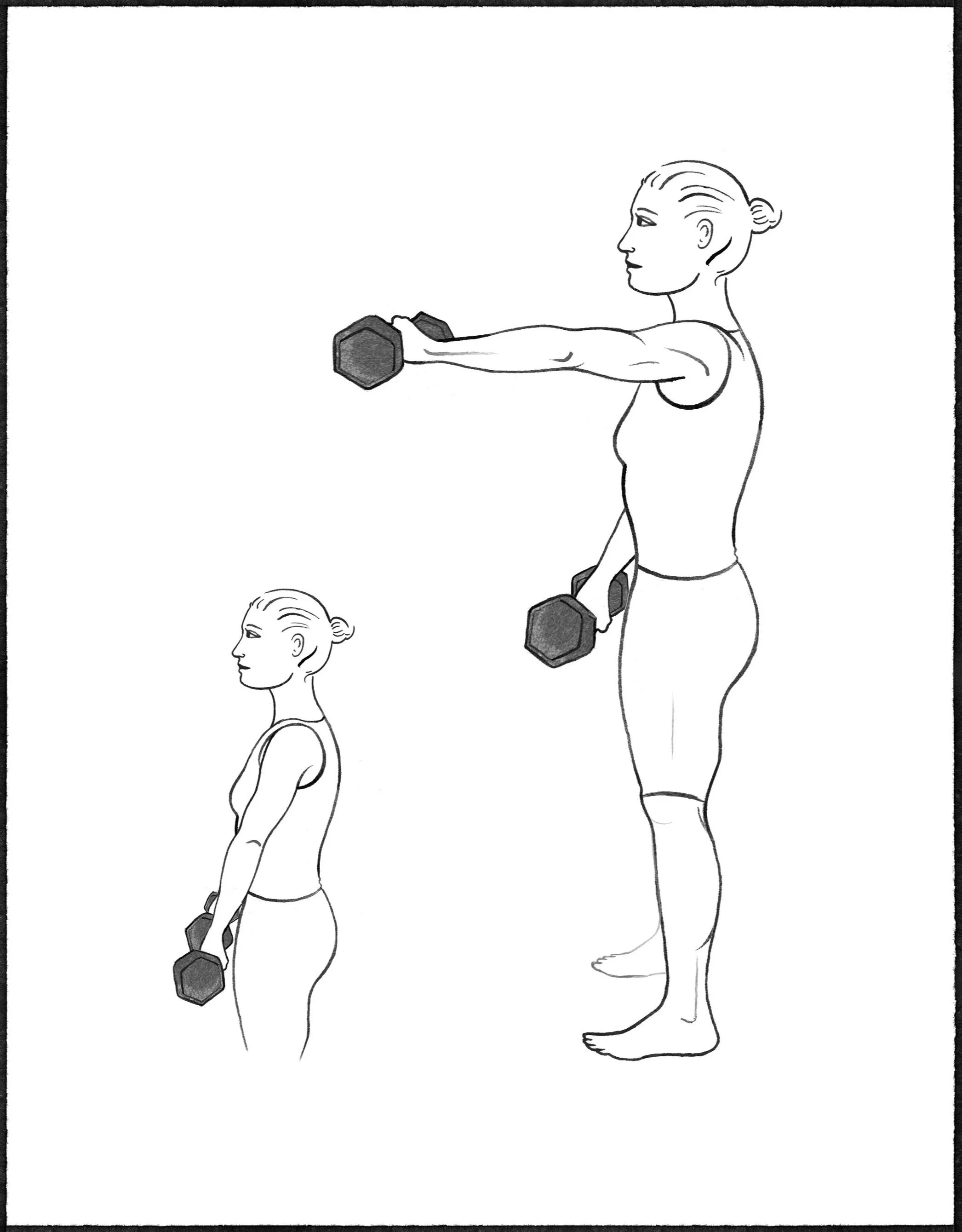Yoga Strength and Flexibility Teaching
All through the first year of the COVID-19 pandemic, starting in mid-March 2020, like a monk in prayer, I spent hours each day in a small basement space with cinderblock walls, more like a bunker than a monk’s cell, devoting myself to developing an innovative form of the type of suspension training that uses an inelastic, adjustable strap suspended from an anchor point, which, in my solitary space, was at the top of a gray metal door, to develop strength and flexibility.
Generally, suspension strap exercises are performed by grasping the strap handles and lifting or lowering our arms to move the bulk of our body, which is dangerously and thrillingly tilted away from the anchor point, as the weight resistance. Utilizing our unbalanced body as resistance requires—and therefore develops—a great degree of stabilization, primarily achieved by forcefully engaging our abdominal core muscles, a benefit absent in the dumbbell and machine exercises that I’d mostly been training with for decades.
But I found other aspects of the established form of suspension strap training sorely wanting. It largely consists of a hodgepodge of exercises that work multiple muscle groups, hyped as “functional fitness.” It’s commonly performed with the strap attached to a large, metal, swing-like frame in a noisy, busy gym. And it’s carried out with an obliviousness to the subtleties of stilling and moving the body and with haphazard breathing.
In contrast, the regime that I created consists of a series of exercises that isolate individual muscles or muscle groups in order to systematically increase strength and flexibility for all the major muscles of the body. It’s more suited to our times because it’s performed with the strap anchored at the top of a sturdy door in a quiet space, usually at home. And it facilitates tranquility and insight because the exercises are performed as a meditation—a meditation that begins with concentration on making deliberately paced, precise movements coordinated with deep, rhythmic breathing. I call this new form of suspension training “suspended-body yoga.”
After developing suspended-body yoga in the first year of the pandemic, over the next two years I refined the regime, taught it remotely to students, and began writing a manual about it entitled Suspended-Body Yoga: Practicing Suspension Strap Strength and Flexibility Exercises as Movement, Stillness, Ocean Breath, and Unstruck Sound Meditation.
To read excerpts from the work-in-progress manuscript of Suspended-Body Yoga, click HERE.
In this manual I explain how to use the suspension training device to animate our body as a resistance prop that’s opposed in strength exercises and surrendered to in flexibility exercises.
Here’s a sketch of the mid-front raise performed with the suspension strap, accompanied by the cheat sheet instructions for this strength exercise.
Although I attended my first hatha yoga class in a bare loft located on Broadway in midtown Manhattan in the late 1960s, I only became immersed in hatha yoga in 1986 when I began taking classes at the Iyengar Yoga Center of New York in Soho, where I learned a form of yoga that demands great precision and élan.
Shortly afterward, I took up strength training at a local downtown gym, Natural Physique Centre. A skinny, withdrawn guy, I found myself surrounded by mostly affable bodybuilders dedicated to pumping iron but performing it sloppily. Employing principles I learned in my yoga class—using moderately slow, controlled movements, maintaining postural alignment as much as possible, concentrating on moving a part of the body while expanding attention to the entire body, and breathing rhythmically—not only made my strengthening routine more efficient, safe and effective; it facilitated a meditative state.
I began teaching a regime using resistance equipment (machines and free weights) to build strength as a yogic discipline in 2001.
A manual that I wrote about my practice, Weight-Resistance Yoga: Practicing Embodied Spirituality, was published under the name Max Popov in 2011.
To read excerpts from Weight-Resistance Yoga, click HERE.
Here’s the illustration from the manual of the front raise exercise using dumbbells.
Weight-Resistance Yoga can be purchased from the publisher, Inner Traditions, and at local and online bookstores.



